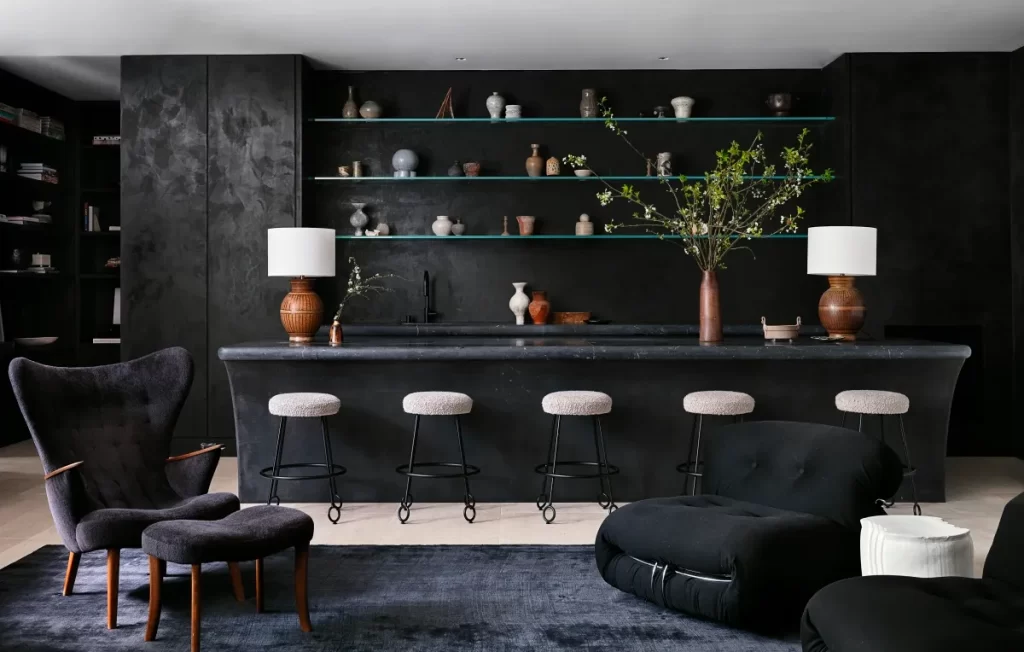
The overall landscape of house design is always changing, influenced by technology breakthroughs, societal upheavals, and homeowners’ dynamic preferences. As we look ahead, the world of possibilities broadens, ushering in fresh trends that reshape how we imagine and feel our living environments. In this article, we look at the upcoming trends in house design, with insights of interior designers for homes who are defining the aesthetic and practical features of our spaces.
Sustainable and Eco-Friendly Designs
The future of house design is mainly geared towards sustainability. Home interior designers are increasingly using eco-friendly materials like recycled wood, bamboo, and repurposed metals in their designs. This not only fits with environmental conscience but also provides a distinct and characterful touch to environments.
Energy efficiency is an important factor for future dwellings. To lessen their environmental effect, home interior designers use smart technology and energy-efficient equipment. This includes the use of solar panels, smart thermostats, and energy-efficient lighting solutions to build houses that are both attractive and ecologically responsible.
Flexible and Multifunctional Spaces
Open-concept living areas are becoming increasingly adaptable. Home interior designers are using moveable walls, sliding doors, and inventive furniture to create flexible spaces. This enables homeowners to modify their living spaces based on changing demands, such as remote work, entertaining visitors, or relaxing.
Modular furniture is gaining popularity due to its adaptability and customisation. Sectional couches with rearrangeable components, modular storage cabinets, and flexible shelf systems are among the modular aspects included by home interior designers. These solutions provide homeowners with the ability to customise their homes to suit various hobbies.
Biophilic Design
Biophilic design, which emphasises the relationship between humans and nature, is expected to prosper. Home interior designers are bringing more greenery within by using indoor plants, living walls, and natural materials. This trend not only improves the aesthetics of rooms but also contributes to better health and air quality.
Optimising natural light is an essential component of biophilic design. To maximise the amount of natural light, home interior designers use wide windows, skylights, and glass doors. This not only minimises the need for artificial illumination but also establishes a seamless link between interior and outdoor locations.
Smart Homes and Integrated Technology
The integration of artificial intelligence (AI) is poised to transform home life. Home interior designers are implementing AI-powered smart home systems that learn and adapt to their customers’ tastes. AI improves daily living by automating climate management, personalising lighting, and implementing security measures.
The future of house design will feature rooms that are more interactive and linked. Home interior designers are using smart mirrors, touchless interfaces, and voice-activated gadgets to improve the utility and engagement of various rooms. Smart kitchens, bathrooms, and living spaces are emerging as sites of technology integration.
Bright Colours and Artistic Expression
Home interior designers are gravitating towards colourful and dramatic colour schemes. From rich jewel tones to fun pastels, the future of home design includes a wide range of hues. To add vitality and personality to places, accent walls, furniture, and décor are painted in vibrant colours.
Artistic expression is gaining the stage in interior design. Home interior designers are using colourful murals, statement art pieces, and one-of-a-kind installations to give spaces flair and character. This movement encourages people to think of their houses as canvases for creative expression.
Conclusion
The future of house design is dynamic, incorporating sustainability, adaptability, biophilic connections, technology developments, and daring creative expressions. As homeowners desire rooms that represent their beliefs and adapt to their changing lifestyles, home interior designers play an important role in defining the houses of the future. These patterns hint at a future in which houses are more than just practical shelters, but it is a curated representation of personality, creativity, and peaceful cohabitation with the environment around us.


More Stories
Home Food Systems: Your Kitchen’s Next Evolution
The Homebody Economy: Creating Productive and Profitable Home Workspaces
Soundproofing Your Sanctuary: A Practical Guide to Quieter Home Offices and Studios